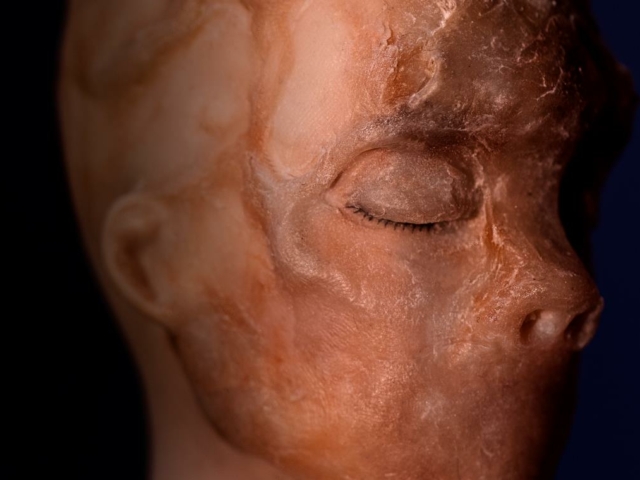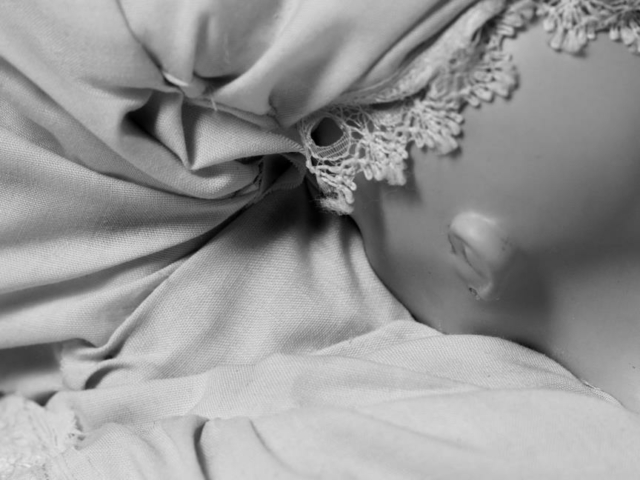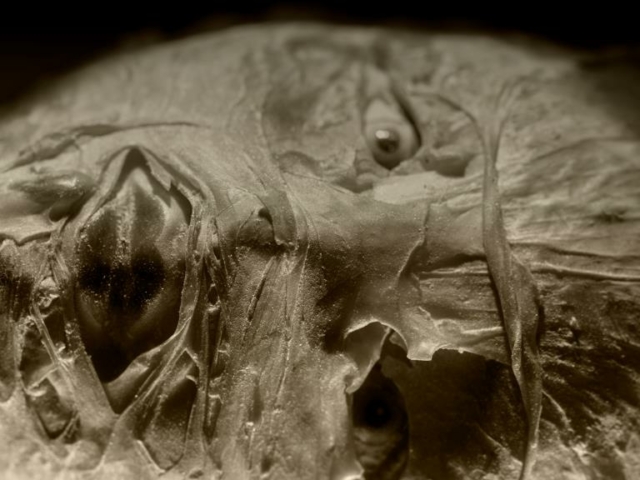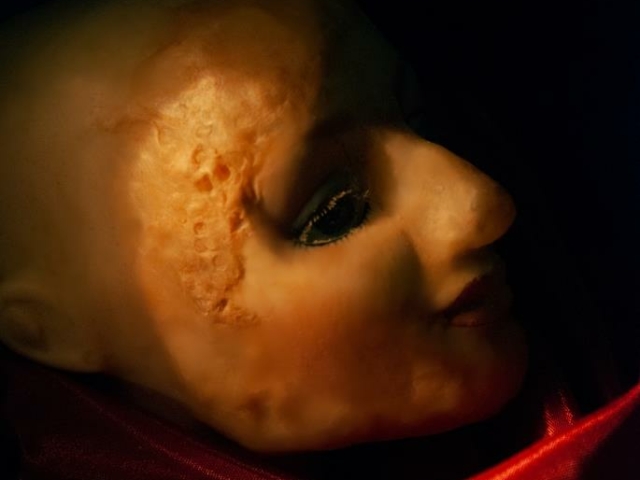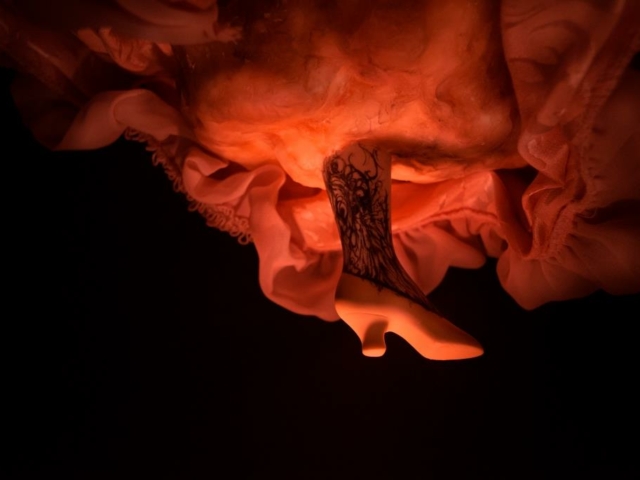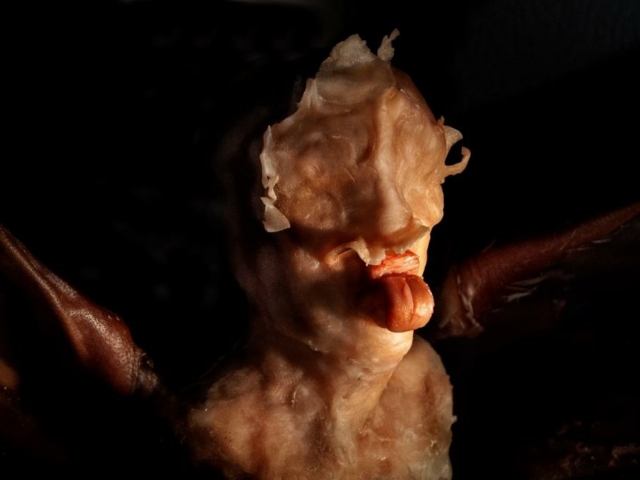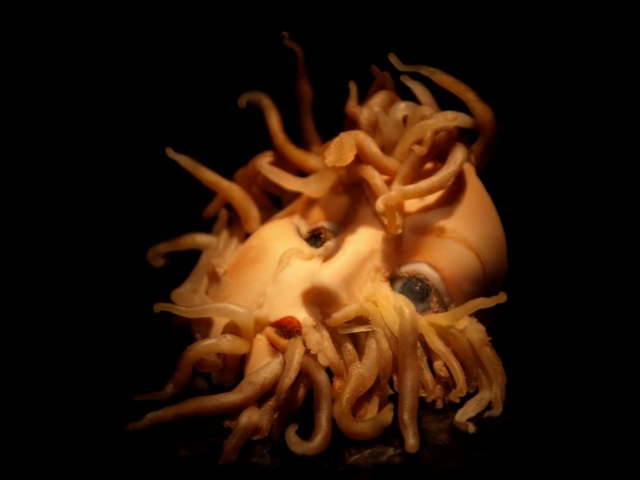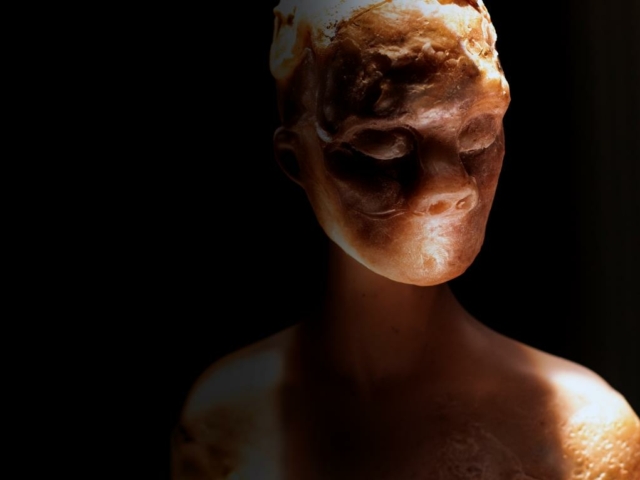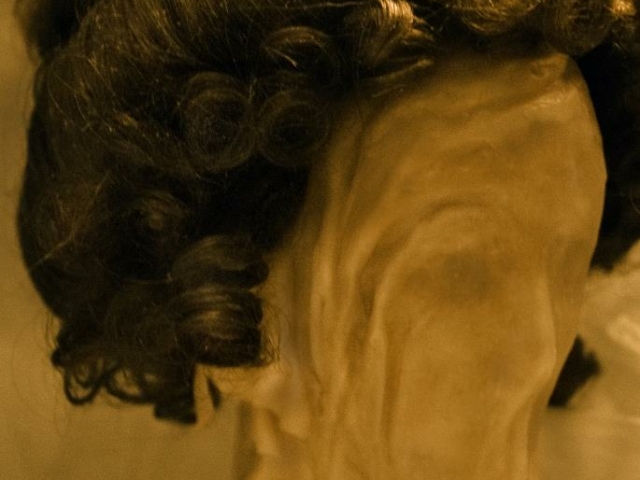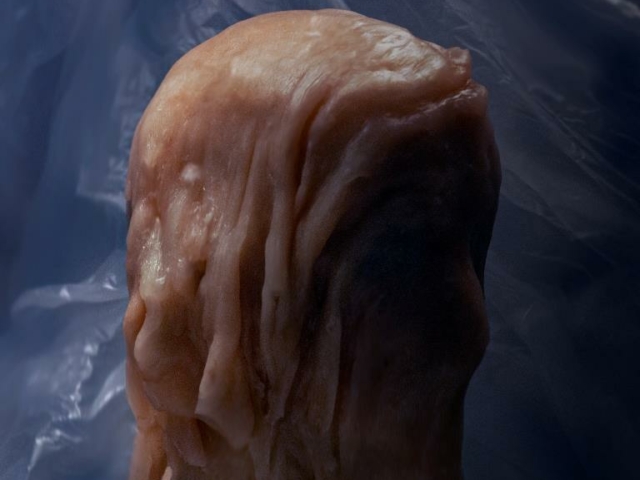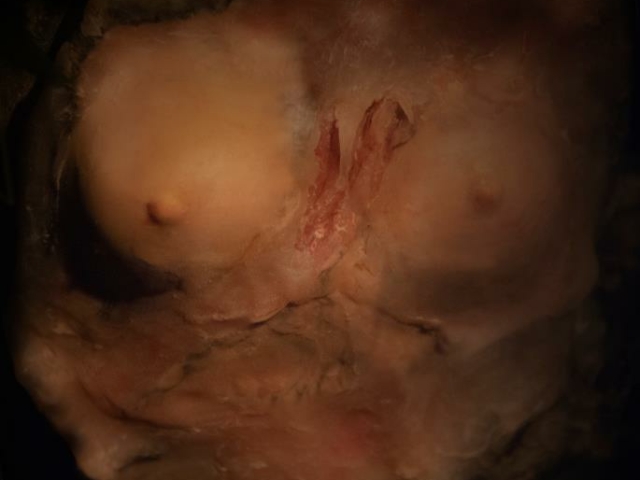The Adipocere Series
The adipocere series, is a series of photographic tableaux inspired by an encounter with the work of Gaetano Giulio Zumbo (1656-1701), an Italian wax sculptor with a fascination with anatomy and corruption. He is best known for his anatomical models that conjoins experimental wax techniques with human matter such as hair, teeth and bone. He also created a series of memento mori tableau or teatrini (‘little theatres’) in coloured wax. These pieces focused on death by plague and syphilis. A number of Zumbo’s pieces are displayed at the La Specola Museum of Natural History, Florence Italy. In 2010, I visited LA Specola Museum, with permission to document their zoological collection, this is where I first encountered Zumbo’s work. Zumbo’s theatres present an apocalyptic scene of tiny figures, each in different coloured wax, textured to represent various states of death and decomposition. I began working with wax as a means to connect with Zumbo’s works in respect my experience today. Wax is a complex and morbid material: its ability to mimic flesh, to exist in between states of solid and liquid forms. I used it to mend adult porcelain dolls that I had collected: to bind, to cover and grow forms into unidentified growths and lesions.
Deceased bodies produce what is know as Grave wax or Adipocere, a wax-like organic substance formed by the bacterial breakdown of body fat in the tissue of the deceased. Adipocere formation is most often seen in corpses that have been submerged in water for a long period of time. Apart from the time since death, the formation of adipocere in buried human remains depends on a variety of factors such as the geographical location, season, vegetation at the burial site, the composition of the coffin, and the chemical and physical soil properties. It is reputed that physician and lecturer Augustus Granville is believed to have made candles from the adipocere of a mummy and used them to light the public lecture he gave to report on the mummy’s dissection. Granville apparently thought that the waxy material from which he made the candles had been used to preserve the mummy, rather than it being a product of the saponification of the mummified body.[1] The unwitting acts of Granville and narratives associated with the human body’s disintegration, became the foundation of this series of unsettling Memento mori modelled on the bodies of broken and discarded porcelain dolls.
[1] Pain, Stephanie (1 January 2009). “What killed Dr Granville’s mummy?”. New Scientist (2687).
Louise Manifold is an Irish visual artist who works conceptually with film, photography, sculpture and text. http://www.louisemanifold.com/

